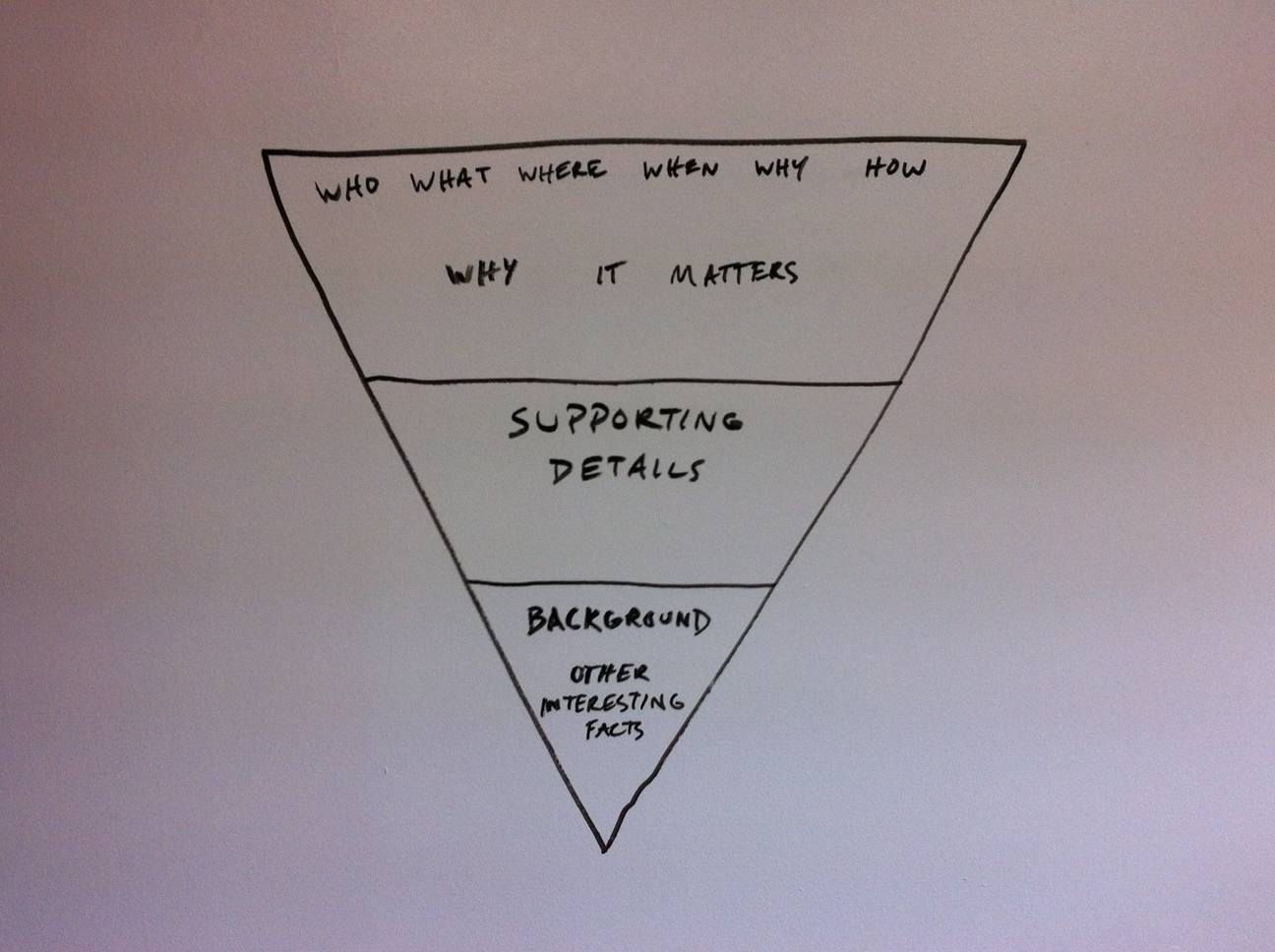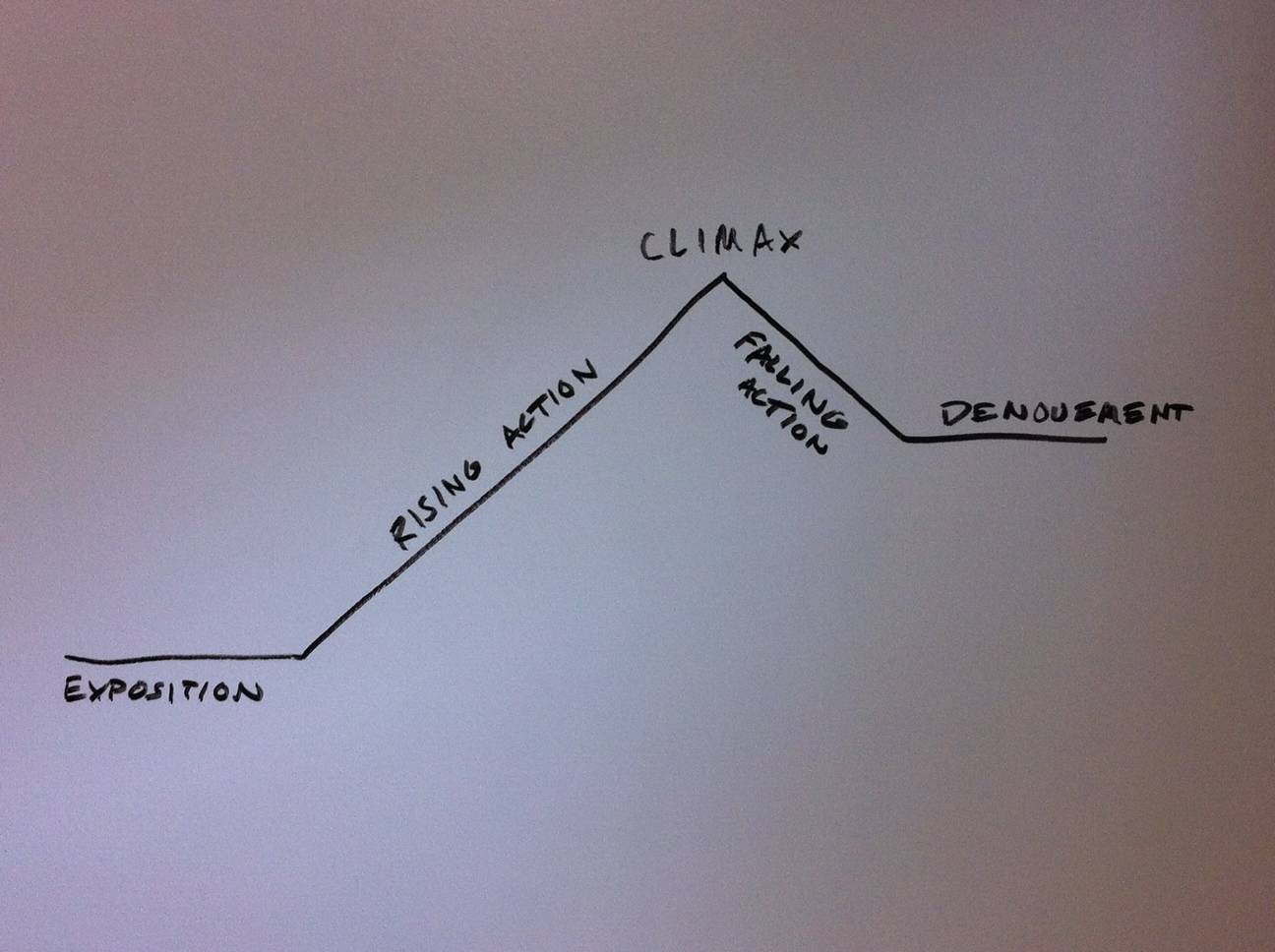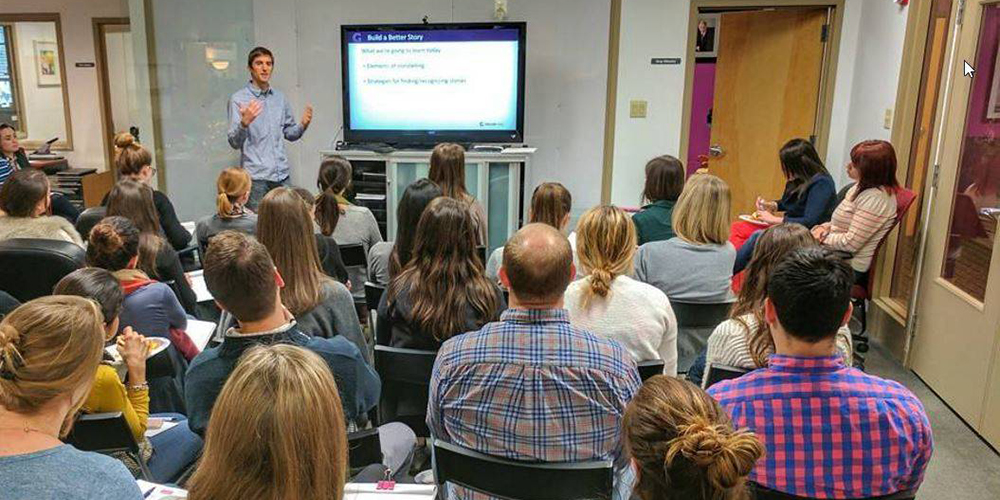When you’re writing a brand story, good bones can help.
What I’m talking about is the structure that supports your story, whether it’s a press release announcing your new product, a thought-leadership blog post, or a contributed article for Forbes.
And while there are many story structures to draw on, two of them stand out, both for their effectiveness in drawing in your audience, and because they can be used by nearly any organization to produce professional-level content.
Content creation continues to be a pillar of many marketing programs. But if you’re having trouble telling your brand story, if it’s just not connecting with customers or reporters, that pillar could gain support from another architecture: pyramids.
STORY STRUCTURE #1: THE INVERTED PYRAMID
If you’ve worked in PR, journalism, or communications, you probably know this one well. It’s a way to structure a piece of content so the most important information — the base of the pyramid — comes first. It’s followed by supporting information, and then interesting details or background information.

In the newspaper days of yore, it allowed editors to chop off a paragraph or two from the end of the article to make more room for advertising or other news without worrying about cutting important facts. It also caters to short attention spans — if readers abandon the article after the first paragraph, they still know the basics of the story.
The inverted pyramid often makes the most sense for press releases. Load the first paragraph of your announcement with the who, what, where, when, why, how – and most importantly, why it all matters.
Seems pretty straightforward, right?
There’s one catch: You have to know what’s important enough to make the first paragraph.
Take this made-up example, which while it’s imagined, is along the lines of press releases I see all the time:
Company XYZ, a leader in technology solutions, today announced it has released the 2017 edition of its benchmark research on what gadgets consumers are most likely to buy. The sixth annual report is designed to give retailers insight into what devices they should carry to maximize revenue.
The report covers three main areas of technology: wearables, smart home tech, and car tech. This is the only report in the industry to cover all three of these technologies, and its inclusion of historical data offers needed context for the current year’s results.
The report is now available on Company XYZ’s website. The top finding this year is that 85 percent of consumers plan to buy a smart home device in the next 12 months.
What’s the news?
If you said the release of the report, you’re wrong.
The news is the report’s findings. That statistic on smart home tech is completely made up, but the findings of a report are almost always what’s most important for the media, and this imaginary company’s customers and partners.
Reports are released all the time. That a new report exists isn’t news. What the report found, however, can be newsworthy. This is a classic example of burying the lede.
By following the inverted pyramid and developing a sense for the information most important to customers and journalists, you can write press releases that stand out from the many releases like the imagined one above.
STORY STRUCTURE #2: FREYTAG’S PYRAMID
This is admittedly a basic structure, but in some form or another, nearly every movie, book, TV show, and story you know follows the ups and downs of Freytag’s pyramid. There are of course many variations and successful stories that ignore Freytag completely, but thinking about this structure can help punch up content like blog posts, bylined articles, and even your YouTube videos.
Gustav Freytag was a German novelist and playwright who set out a five-act dramatic structure in a pyramid shape that now bears his name. Here are the five parts:

- Exposition: This sets the context: what are we talking about, who’s involved, what’s at stake?
- Rising action: A series of events or ideas build on each other and advance the narrative.
- Climax: A turning point, the big takeaway, a call to action.
- Falling action: The hero prevails, growth and change have occurred, results are tallied.
- Denouement (from the French word for “to untie”): The resolution, conclusion, a look to the future.
This structure is probably already hard-wired in your brain from the many movies you’ve seen and books you’ve read — nearly all follow it to some degree. Using it as a guide can give your content momentum that it might not have had before.
It works in contributed articles, blog posts, even YouTube videos. One example is Casey Neistat’s chronicle of his first-class Emirates flight from Dubai to New York. With more than 31 million views to date, it shows the power of having an influencer tell your story.
In nine minutes, his trip is neatly packaged into a Freytag pyramid structure.
- 00:00 to 00:53: He gets the upgrade to first class.
- 00:54 to 5:23: From the snacks to the TV to turning his seat into a bed more comfortable than his one at home, each feature of the flight gets bigger and more luxurious.
- 5:23 to 8:15: Showering on an airplane. The highlight of the trip for Neistat.
- 8:16 to 8:25: The plane lands in New York.
- 8:25 to 8:40: Neistat summarizes the trip, arrives home.
A piece of content doesn’t have to be a narrative to use Freytag’s pyramid. Buzzfeed’s lists and quizzes have long sought to elevate themselves above the onslaught of content by building their posts around a narrative structure.
Buzzfeed’s Jack Shepherd has noted that “a list is just a scaffolding for a story. It’s just a way of organizing information. I mean, The Odyssey is 24 chapters. You could call that 24 Chapters About Odysseus.”
Quizzes can work in a similar way. Nieman Lab argues that “while quizzes are formally comprised of questions and answers, what you’re getting is content that interests you disguised as a narrative about yourself.”
Next time you’re writing a list post or a quiz, pay a little more attention to how it’s assembled. How the list is ordered? Could it be reshuffled so that each point builds on the one that came before? Ultimately it depends on the content you’re writing, but by tapping into the Freytag pyramid structure, your content can take on more urgency and tap into every person’s innate love of story.
TRY SOME PYRAMIDS
Obviously each of these structures has its limits, but as general guidelines, they can give your content momentum, keep readers engaged, and elevate your brand story. Give them a try with your next press release or blog post and let me know how it goes.

